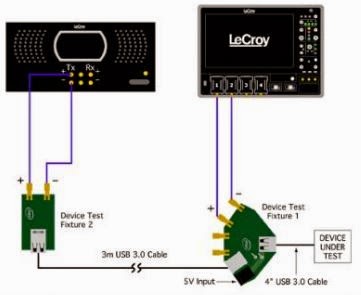 |
| Figure 1: In USB 3.0 link-layer compliance test, all logical states of the LTSSM come into play |
You need to test, we're here to help.
You need to test, we're here to help.
30 January 2015
Plan For Successful USB Compliance Testing (Part III)
26 January 2015
Plan For Successful USB Compliance Testing (Part II)
 |
| Figure 1: A representative transmitter compliance test setup |
16 January 2015
Plan For Successful USB Compliance Testing (Part I)
 |
| Figure 1: The coveted SuperSpeed USB logo |
Subscribe to:
Posts (Atom)